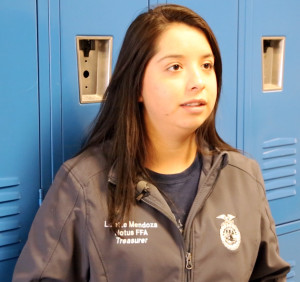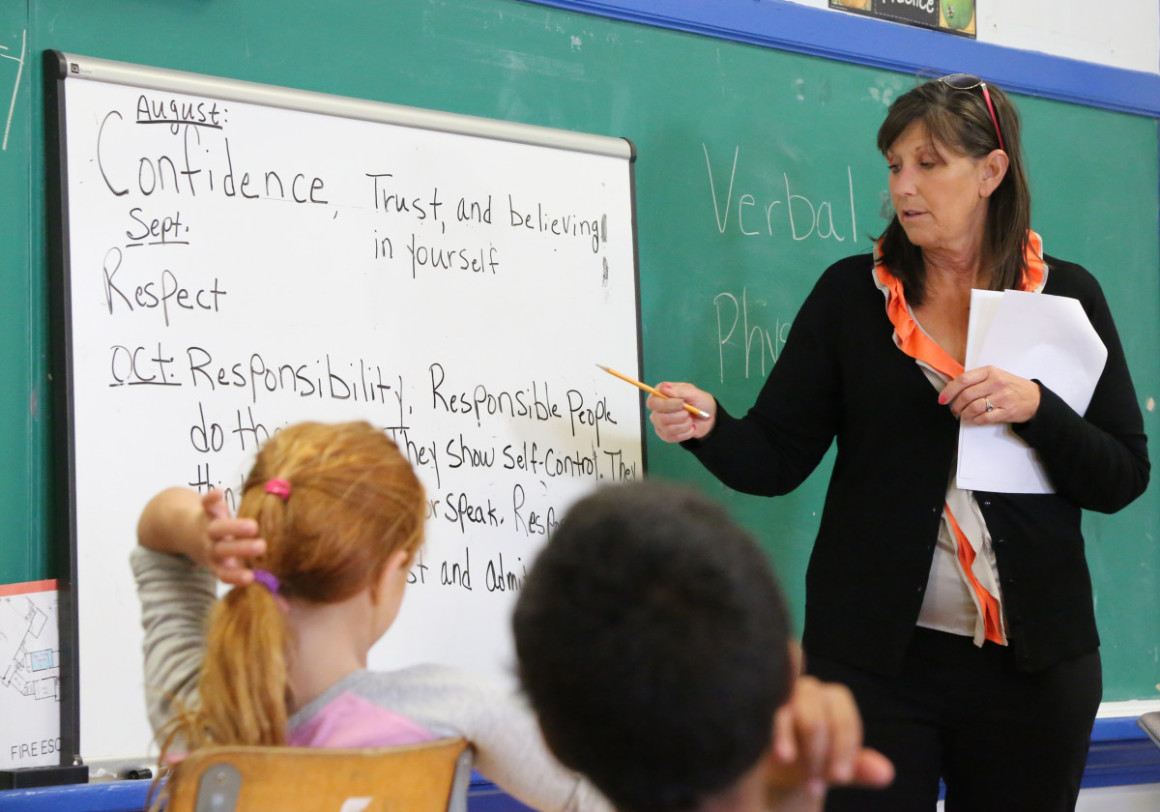 For Lizette Mendoza, the school day starts early, well before the bell rings at 7:45 a.m.
For Lizette Mendoza, the school day starts early, well before the bell rings at 7:45 a.m.
She drives 25 minutes from her home in New Plymouth to Notus High School — where she serves as senior class president and is active in Future Farmers of America, National Honor Society and other clubs.

If Mendoza attended her home district in New Plymouth, she would attend school five days a week. She chooses Notus because its four-day schedule gives her more time with her father, who also has Fridays off. She also thinks the flexible but demanding schedule will help her make the transition to college next year.
“It does get a little hectic, but I have managed to make it work,” she said.
Surrounded by Canyon County’s fertile farm country, about 30 miles southwest of Boise, the Notus School District is one of Idaho’s higher-performing four-day districts.
- In the spring of 2015, all 21 of Notus’ juniors took the SAT, and averaged 1453. That average score exceeded the state’s average of 1353. In April 2012 — Notus’ first year on the four-day schedule, and the first year students could take the SAT on the state’s nickel — Notus juniors averaged 1109.
- In terms of college “go-on rate” — the state’s defining education yardstick — Notus is already well ahead of pace. Seventy-three percent of Notus’ Class of 2014 enrolled in college, while the state only hit the 50 percent mark.
- Enrollment is growing, in part because of an open enrollment policy that attracts students such as Mendoza. About 30 percent of students enroll from nearby districts and charter schools. More students mean higher daily attendance — and more money for the district.
The students who choose Notus, 405 in 2015-16, don’t have much downtime. Their school day is extended and heavily scheduled.
In high school, the seven-period day runs from 7:45 a.m. to 3:30 p.m. With 1,025 hours of classroom time per year, Notus exceeds the state requirement of 990 hours.
Breaks between high school classes last only three minutes. Hallway traffic in the compact building moves briskly. The high school is a closed campus, so students eat lunch in the cafeteria.

Elementary students show up at 7:30 a.m. for breakfast. Their school day runs from 8 a.m. to 3:20 p.m. Teachers make sure the grade-schoolers get “a lot of good times to wiggle,” said teacher and counselor Mary Ihli-Laan — but in moderation.
As students shift from one subject to the next, they are expected to work on memorizing math or vocabulary.
“Those transitions are seamless, because there is no time to waste,” first-year elementary school principal Jen Wright said.
The schedule change coincided with the runup to the Idaho Core Standards. At each grade level, teachers developed what superintendent and high school principal Craig Woods calls “power standards:” essentials in math and English language arts.
“You really have to narrow your focus of what you’re teaching,” Woods said.
However, the compressed four-day week also frees up some hours. Teachers spend 15 Fridays in school, using the time for class preparation or gleaning information from student data.
The numbers from Notus are largely encouraging, but some questions linger. Like most four-day districts, Notus fell below state averages on this year’s Smarter Balanced Assessment Consortium online exam, the new test aligned to Idaho Core Standards. The dropoff was pronounced in fifth- and sixth-grade math, and Wright and her faculty are trying to pin down the cause.
And none of the data answer a basic question: What effect, if any, does the four-day calendar have on student performance?
It’s difficult to draw conclusions in the elementary grades, because Notus also launched all-day kindergarten in 2011-12. The district offers the extra half day at no cost to parents. Many kindergartners show up with no exposure to preschool, forcing teachers to play catchup.
Woods adds another factor into the equation: a motivated staff. When Woods came on board in time for the switch to the four-day schedule, teachers and administrators determined to make the change work. Teachers worked particularly hard during the transition.
The result is a success story — but, perhaps, a success story that just happens to be unfolding on a four-day campus.
“I think it’s just a change in the culture,” Woods said. “It’s not one factor. There’s no way you can just pinpoint it.”
“Rescheduled Education” is the product of a partnership between Idaho Education News and Idaho Public Television. Reporting on the series are Kevin Richert and Clark Corbin of Idaho Education News and Seth Ogilvie and Melissa Davlin of Idaho Public Television. Video producers are Andrew Reed of Idaho Education News and Troy Shreve of Idaho Public Television. Idaho Education News data analyst Randy Schrader compiled data for the series.
‘Rescheduled Education’ at a glance
Day One, Monday, Nov. 16
An unproven experiment, involving 26,881 Idaho students
Data dive: Surprising statistics on four-day schools
Day Two, Tuesday, Nov. 17
Four-day school test scores are inconclusive — but troubling
Sage and COSSA Academy: Two four-day outliers
Day Three, Wednesday, Nov. 18
A schedule change saves money. Just not much.
Preston upholds a decision driven by dollars
Day Four, Thursday, Nov. 19
Teachers and students adjust to longer school days
‘No time to waste:’ Notus runs at a fast pace
Day Five, Tuesday, Nov. 20
Across rural Idaho, four-day weeks become routine
Challis embraces change — but with reservations
Uncomfortable questions, unclear answers on social impacts (Idaho Reports blog)
